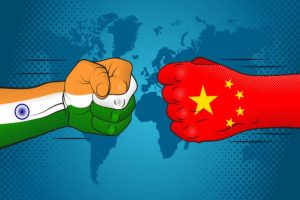In recent days, the looting of personal belongings from the residence of Sheikh Hasina, the former Prime Minister of Bangladesh, has captivated the public’s attention and offered a revealing look into the complexities of human behaviour during societal unrest. This incident occurring amid widespread protests invites analysis of the psychological, social and economic dynamics at play.
At the core of this event is the psychological concept of de-individualisation which occurs when individuals lose their sense of personal identity within a crowd. This phenomenon reduces personal accountability allowing people to engage in actions they might typically avoid. In the chaotic environment of a protest, the anonymity provided by the crowd can diminish individual inhibitions, leading to impulsive and sometimes destructive behaviour.
Advertisement
This looting also accentuates the process of dehumanization directed at authority figures. Sheikh Hasina as the former head of state represents authority and power. During protests, authority figures often become symbols of oppression or targets of frustration. The looting of her personal belongings reflects a desire to strip her of her humanity; to reduce her from a national leader to a mere victim. This dehumanization allows protesters to justify their actions and distance themselves from empathy.
The male looters’ flaunting of Sheikh Hasina’s expensive sarees and inner garments is a complex act intertwined with symbolic factors. By publicly displaying these intimate items, the looters not only tried to challenge Sheikh Hasina’s authority and dignity but also engaged in symbolic defiance against the establishment. The exposure of inner garments, typically personal and hidden for a woman, is a deliberate violation of privacy meant to humiliate the former leader. In a patriarchal society, this behaviour reflects entrenched gendered power dynamics where men assert dominance and control over women.
By handling and showcasing Sheikh Hasina’s clothing including her sarees and inner garments, the looters reinforce gender stereotypes casting her as vulnerable and themselves as aggressors thus amplifying the societal issues of power imbalance and disrespect for women’s autonomy. Economic disparities play a significant role in such acts of looting. When communities face inequality, frustration and resentment can build to a boiling point. The act of looting here can be perceived as reclaiming power or agency against perceived injustices. For some protesters, the personal possessions of Sheikh Hasina may symbolize wealth and privilege intensifying their anger and prompting them to act.
Beyond material gain, looting also carries symbolic significance where by seizing personal items the protesters try to send a powerful message that the comfort and security of those in power can be disrupted just as ordinary people’s lives are. This act of defiance is a form of protest against the perceived inequities perpetuated by those in authority. The intensity of emotions within a crowd can quickly become contagious. Emotional contagion spreads feelings rapidly among individuals, often leading them to mirror each other’s actions. When one person starts looting, it can trigger a chain reaction with others following suit, caught up in the collective momentum. Additionally, the phenomenon of group polarization aggravates these dynamics.
Within a group, shared emotions and beliefs can become more extreme, reinforcing the group’s existing attitudes. In the case of the protests, the collective anger and frustration among the demonstrators intensified and led to a loop that fuelled the looting. The looting of Sheikh Hasina’s personal belongings is a troubling manifestation of the complex interplay between psychological, social and economic factors.
Such behaviour is not only destructive but also deeply concerning and calls for a thorough analysis to understand the motivations driving individuals to such actions. It is crucial to delve into the underlying causes to better comprehend the human psyche during times of upheaval. By doing so, one can get valuable insights into collective behaviour and work toward preventing such reprehensible outcomes in the future.
(The writer is an author and academician.)











